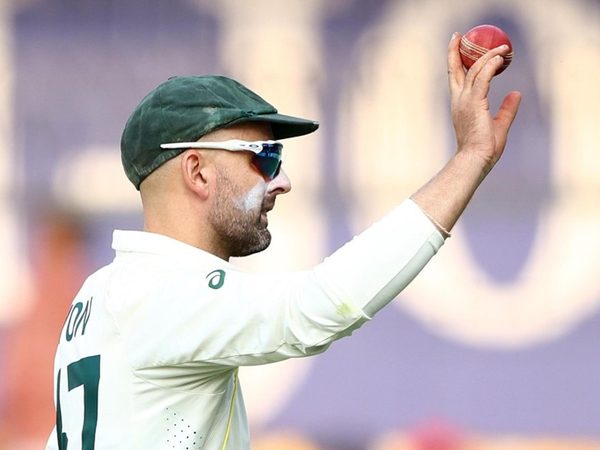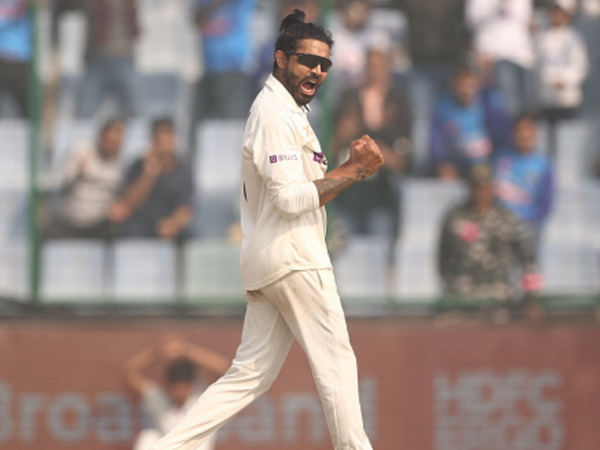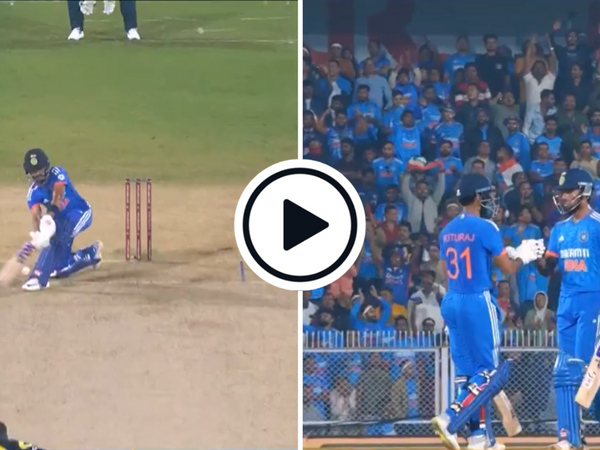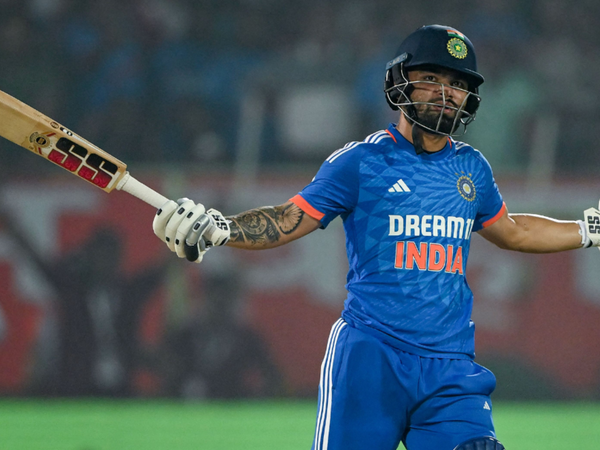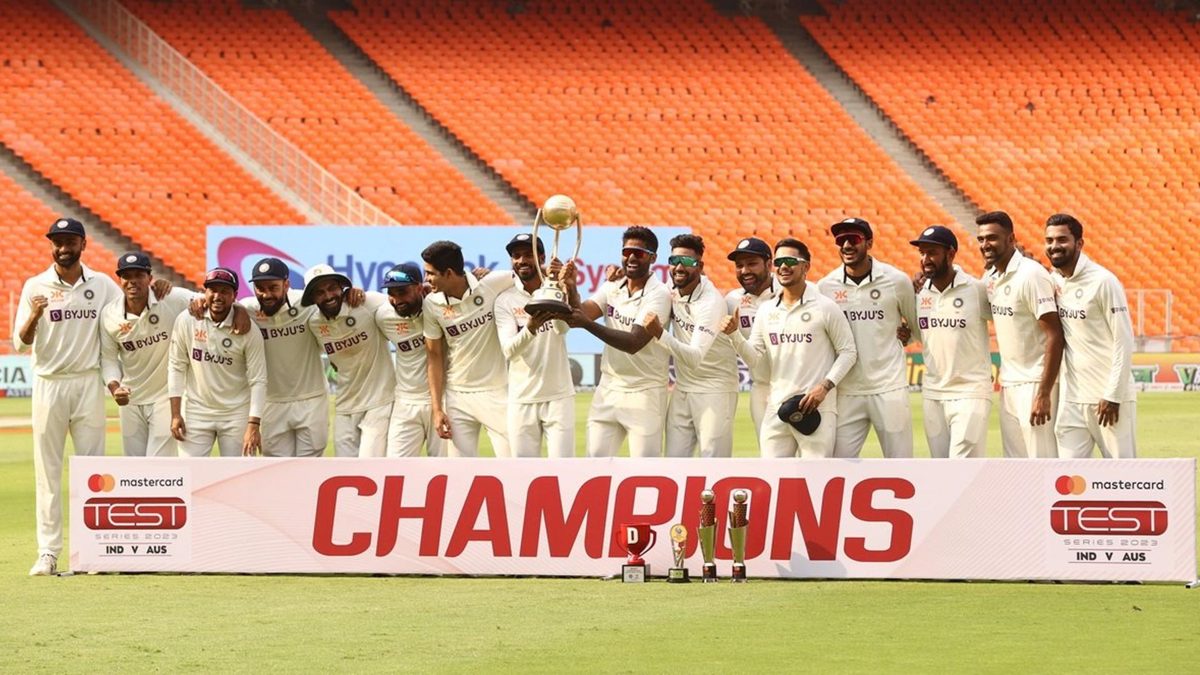
Australia toured India in 2022/23 for four Test matches and lost the series 1-2. Bharat Sundaresan’s report appeared in the 2024 edition of Wisden Cricketers’ Almanack.
Subscribe to the Wisden Cricket YouTube channel for post-match analysis, player interviews, and much more.
Marnus Labuschagne was beginning to get restless. He still had his pads on, and was mid-radio interview. But he was impatient to join Virat Kohli and his senior Australian team-mates, who were in affable conversation. A highly anticipated series had finished with Shubman Gill and Cheteshwar Pujara – two part-time part-timers – bowling to the world’s two top-ranked batsmen, Labuschagne and Steve Smith, reflecting the drab nature of the pitch for the fourth Test in Ahmedabad. The convivial post-match congregation typified the friendliest encounter between these teams in decades – vastly different from Australia’s previous tour, six years earlier, when the Indians turned down a drink after an ill-tempered series.
The bonhomie at the Narendra Modi Stadium had been witnessed repeatedly over the preceding five weeks, with Kohli leading the way. In 2017, he had declared he had no friends left in the Australian camp. Now, he was rekindling mateships and sparking a few more, and perhaps had as many between-overs chats with Nathan Lyon or Usman Khawaja as he did with his own batting partners. If anything, it was the surfaces for the first three Tests that seemed volatile, resulting in matches played in fast-forward. If you were at the crease, it was a question of kill or be killed, and led to batters from both teams rallying round each other, as if part of a victim-support group.
The cricket only intermittently matched the pre-series hype. And although the final scoreline was the same as the three previous meetings between these nations – India winning 2-1, to retain the Border–Gavaskar Trophy – this one failed to reach the same heights. The ingredients for another classic were there, but never blended. There was no tricky run-chase, no dramatic battle for survival. Nor was there a major plot twist of the kind India and Australia have a habit of producing. The Australians did have a chance to orchestrate a turnaround, on the third morning of the second Test in Delhi, only to collapse from 65-1 to 113 all out, with Ravindra Jadeja picking up seven wickets. Considering how well they fought back at Indore, they had blown their best chance to secure only their second series win in India since 1969/70. No wonder Smith, who stepped in as captain for the last two games after Pat Cummins returned home to be with his dying mother, kept lamenting that manic morning in Delhi.
This was India’s 16th successive home series win, stretching over more than a decade, and like many of the others it owed much to R Ashwin. He and Jadeja, who had both been Player of the Series on previous visits by Australia, now shared the award. They were unstoppable in their own back garden. It was the most significant triumph at Test level for captain Rohit Sharma and coach Rahul Dravid. Qualification for the World Test Championship final – against Australia at The Oval in June – was the icing on the cake. The tourists had a lot to be pleased about too, notably the emergence of the bespectacled young off-spinner Todd Murphy. There was also a long-awaited first Test hundred for Cameron Green, and impressive returns for Khawaja, Labuschagne and Travis Head, who all averaged 40-plus.
The three one-dayers that followed felt a little tepid, despite the Australians being nearly at full strength. In a reversal of the Test series, they did pull off a solid comeback after losing the first match, closing out the other two games in resounding fashion. India lost the second with 234 balls unused, a record defeat for them. Suryakumar Yadav endured a nightmare series, out first ball in all three matches, twice lbw to Starc. The goodwill, though, which had flowed into the one-dayers, then seeped into the IPL, for which many of the tourists remained.
Australia touring party: *PJ Cummins (T), SA Abbott (50), AC Agar (T/50), SM Boland (T), AT Carey (T/50), NT Ellis (50), CD Green (T/50), PSP Handscomb (T), JR Hazlewood (T), TM Head (T/50), JP Inglis (50), UT Khawaja (T), MP Kuhnemann (T), M Labuschagne (T/50), NM Lyon (T), MR Marsh (50), GJ Maxwell (50), LRT Morris (T), TR Murphy (T), MT Renshaw (T), SPD Smith (T/50), MA Starc (T/50), MP Stoinis (50), MJ Swepson (T), DA Warner (T/50), A Zampa (50). Coach: A. B. McDonald.
After the second Test, Cummins left to be with his seriously ill mother (Smith took over as captain); Kuhnemann joined the squad when Swepson flew home for the birth of his first child, while Hazlewood (leg injury) and Agar (short of fitness) also returned to Australia. JA Richardson was included in the 50-over squad, but hurt a hamstring and was replaced by Ellis.
First Test at Nagpur, February 9-11, 2023: India won by an innings and 132 runs
India 12pts. Toss: Australia. Test debuts: KS Bharat, SA Yadav, TR Murphy.
“Embrace the chaos… Don’t let the Indian spinners dictate terms… Soak up the pressure… Hold your nerve and don’t panic.” The Australians had laid out their mantras before landing in India. They had spent five long days in Alur, on the outskirts of Bangalore, putting those words into action on custom-made pitches. There were lengthy net sessions as the batsmen prepared diligently for the spin challenge to come, and various match-simulation sessions to iron out techniques. There were even bowlers scouted from all over India to imitate Ashwin, Jadeja and Akshar Patel. While they found a genuine Ashwin impersonator in Mahesh Pithiya, it was left to assistant coach Daniel Vettori to double up as India’s two world-class left-arm spinners with his throwdowns. The tourists made the right noises, and seemed to have the right plans in place.
Even so, they came a cropper in the first Test at Nagpur. They let the Indian spinners dictate terms. They failed to soak up the pressure. They lost their nerve. They panicked. Eventually, they succumbed to the chaos of Test cricket in India. Australia surrendered all ten second-innings wickets in a session on the third day, to lose by an innings and plenty. The hours spent facing the Ashwin lookalike were of no avail when up against the real thing, as India’s most successful off-spinner scythed through the middle order, after removing Khawaja in the second over of the innings. Batter after batter stayed leaden-footed in his crease, and was trapped in the Ashwin web.
Some might argue the visitors had panicked a day or two before the Test had even begun. It all started with pictures on social media of the VCA Stadium ground-staff selectively watering the pitch so that it might break up more quickly in areas that would trouble left-handers, of which Australia had several. There was such a hullaballoo that the tour selectors decided to leave out one of those lefties, the in-form Travis Head, and bring in the right-handed Handscomb. It left Australia short of a middle-order batsman willing to chance his arm and unsettle the spinners.
For all the focus on spin, Australia’s openers were knocked out within 15 minutes by seam, after Cummins won the toss. In fact, until Carey at No.7 reverse-swept the first ball he received to the boundary, the three Australian left-handers had between them faced a single delivery of spin – with which Jadeja trapped Renshaw.
Indeed it was Jadeja, returning to international cricket after knee surgery, who set the game up for India on the first day. Labuschagne and Smith had played the spinners with little fuss in a partnership of 82, before a moment of magic from Jadeja had Labuschagne stumped, a first Test victim for the new wicketkeeper Srikar Bharat, who had replaced Rishabh Pant, still recovering after a serious road accident. Labuschagne’s 49 would remain his team’s highest score, the first time not one Australian had made a half-century in a Test in India. Jadeja then produced a subtle variation of angle to go through the defences of Smith. And Australia’s hopes of a decent total were dashed once Ashwin ended Carey’s counter-attack. The last five wickets added only 15 as Australia subsided for 177, and Jadeja picked up five.
Todd Murphy, a 22-year-old off-spinner, had played just seven first-class games, five in the Sheffield Shield for Victoria. Now here he was, before thousands of roaring fans, making an unexpected Test debut and exposing the Indian middle order’s own frailties against spin. At the other end, though, Rohit was showing team-mates how to do it in a sublime masterclass on a turning pitch, using his feet and hands expertly, and bringing up his first Test hundred against Australia.
But Murphy finished with 7-124, including the prize scalp of Kohli, caught behind down the leg side; Lyon, hugely more experienced, managed 1-126. India were only marginally ahead when Cummins removed Rohit with the second new ball to make it 229-6, and Bharat soon followed. But Jadeja changed the match again, putting on 88 with Patel (who went on to a career-best 84) in a partnership that showed left-handers could flourish. Patel and Mohammed Shami further dented the tourists’ spirits, and India finished with 400 – a lead of 223. When the fun ended, at lunch on the third day, the Australians had been in the field for nearly 140 overs, leaving them with weary legs and frazzled minds.
That made it perilous to face Ashwin and Jadeja on a surface starting to exhibit the expected trickery, and it was made more difficult still by the Australians’ reluctance to attack. Only Smith, left high and dry with 25, lasted more than an hour as the innings crumbled for 91 – their lowest total in India, below 93 at Mumbai in 2004/05. Ashwin collected five wickets to end with match figures of 8-79, including his 450th in Tests, Jadeja had 7-81, and Shami wrapped things up with two in four balls. Boland was the tenth Australian wicket to fall lbw, a national record.
Player of the Match: RA Jadeja.
Second Test at Delhi, February 17-19, 2023: India won by six wickets
India 12pts. Toss: Australia. Test debuts: MP Kuhnemann.
How did Australia blow their chance? The question will haunt some of the older tourists, unlikely to get another opportunity to add to their caps the illustrious feather of a series win in India. It is very rare for a visiting team to be ahead on the third morning of a Test here, but Australia squandered their advantage in 90 minutes of mayhem. On the few occasions India lose at home, it tends to be by a big margin – and this Test seemed to be following that script, before Australia’s last nine tumbled for 48, Jadeja scything them down with a career-best 7-42. Five of his victims were bowled – the first such occurrence in a Test since Pakistan’s Shoaib Akhtar against New Zealand at Lahore in
May 2002.
When the third day had begun, Australia led by 62 with nine wickets left, on a pitch already breaking up badly. The previous evening Head – back in the team and promoted up the order after Warner was ruled out by concussion – had put pressure on the Indian spinners for the first time in the series. And when he started the morning with a powerful boundary through the covers off Ashwin, Australia looked set to seize the moment. But Head failed to last the over.
The late slide in the first Test had been understandable, considering the match situation, but this was inexplicable. Among many frenzied shots, the two that exemplified the panic came from vice-captain Smith, who fell to an injudicious sweep at Ashwin, and captain Cummins, who missed a wild hoick at Jadeja. After being too timid in Nagpur, Australia had gone to the other extreme. There was some justification in their wish to score quickly: the pitch was deteriorating, and it took the wise head of Pujara to get India past their target of 115. What Australia would have done for another 100 runs.
It was a Test of close margins, with the pitch again coming under scrutiny in the lead-up. The black clay meant low bounce was expected to be a factor; Labuschagne adopted his home-grown “Lindsay Lowhands” method to counter it, named in honour of the American actor Lindsay Lohan. This time, the tourists’ batters backed up Cummins’s correct call at the toss, even though Warner was worked over by Siraj, who inflicted a hairline fracture to his left elbow, then pinged him on the helmet; only later was concussion diagnosed (Renshaw replaced him). Ashwin got rid of Labuschagne and Smith in three deliveries, but Khawaja – playing only his second Test in India – swept and reverse-swept with flair and a tinge of risk. Handscomb showed the best temperament and technique in an undefeated 72, while Cummins chipped in with a few lusty blows, as Australia reached a serviceable 263.
Left-arm spinner Matt Kuhnemann had received an SOS call, and went from playing for Queensland in a Sheffield Shield game in Melbourne to opening the bowling on Test debut five days later. His first wicket arrived next afternoon, trapping the well-set Kohli for 44, but the standout performance came from Lyon, who took 5-67, one of his best spells in the subcontinent. From 46 without loss, he had extracted Rahul, Rohit and Pujara in ten deliveries to turn the match on its head.
If their later batting blues cost them the game, the Australians had already missed an opportunity. India were 139-7 on the second afternoon, but were rescued by the safety valve of having three world-class spinners who are all competent batsmen. Patel followed 84 in Nagpur with 74, and put on 114 with Ashwin; India ended up one adrift. With Head showing the folly of omitting him from the first Test, Australia had sprinted to 61-1 in 12 overs by the second-day close. Then Jadeja, who completed match figures of 10-110, another career-best, and Ashwin ran riot.
Player of the Match: RA Jadeja.
Third Test at Indore, March 1-3, 2023: Australia won by nine wickets
Australia 12pts. Toss: India.
A delivery from Starc early on the first morning caused widespread amusement. Starc burst out laughing, and was joined by Rohit, Gill, and Carey. The fifth ball of the fifth over had reached Carey on the bounce after zapping past Rohit’s outside edge, and caused an explosion of dust. The laughter was acknowledgment that the pitch wasn’t long for this world. Nor was the Test.
A surface laden with landmines meant that, for batsmen on both teams, the match was an ordeal. It lasted 189.1 overs, with Head on the third morning spiriting Australia to one of their most famous wins in India. The seamers sent down 27 overs in all, and took only four wickets, three for Yadav as Australia lost their last six for 11 in the first innings.
By then, though, left-armer Kuhnemann – still pinching himself after his sudden elevation – had become the first spinner to take advantage of conditions. He had Rohit stumped in his first over after a flurry of boundaries from India’s openers, then accounted for Gill in his next. Lyon produced the ball of the day – a big-turning off-break – to bowl Pujara, before Murphy again dismissed Kohli, trapping him with a top-spinner, after a hard-fought 22 that summed up the problems facing the batters. There was no respite from the trial by spin: it was as if the counter-intelligence forces and the tax department had sent all their heavies together for the interrogation. Kuhnemann grabbed 5-16, his best figures in first-class cricket, as India succumbed less than an hour after lunch for 109.
The procession continued when Head was dismissed cheaply by Jadeja, who had opened the bowling with Ashwin. But Khawaja, in the purplest form of his career, stood in India’s way, putting an end to the urban legend that “Uzzie can’t play spin”. His 147-ball 60 was among the finest knocks by a visiting batsman in India, full of gumption and skill, and he was ably supported by Labuschagne and Smith. Australia took the lead only two down and, with Handscomb and Green exhibiting precise footwork to add 40 important runs, they made it to 186-4. Yadav found reverse swing to take the wind from their sails, but a lead of 88 looked decisive. In Rohit’s first real examination as Test captain, he arguably overbowled Jadeja.
Now began Smith’s game of chess. Back in charge because Pat Cummins had flown home to be with his ailing mother, Smith would later reveal that captaining in India is among his favourite challenges, and it was obvious. Though the Test passed in a blur, his leadership made every ball feel like an event. The only constant was Lyon, wheeling away in one of his best performances and become the first overseas bowler to take two eight-fors in India; for India, only Narendra Hirwani (in a single match) and Vinoo Mankad had achieved the feat. Smith asked Lyon’s younger colleagues, Murphy and Kuhnemann, to be themselves rather than try to replicate Ashwin or Jadeja, but it was Lyon who produced the best version of himself. Two excellent catches helped. Khawaja, off the field with a back issue for most of the innings, dived to his left at mid-on to hold a blinder just as Iyer threatened a recovery. Then Smith sensationally latched on at leg slip to send back Pujara, who had somehow hung around for 142 deliveries amid the carnage. Yadav and Siraj made ducks, as Lyon completed the demolition late on the second day.
The first delivery Khawaja faced next morning from Ashwin whizzed past his bat, and caused as much alarm as Starc’s opening-day dust devil; the second had him caught behind. But Head and Labuschagne embraced the chaos, held their nerve, and took Australia to a memorable win. The pitch was initially rated “poor” by the ICC, although this was changed to “below average” on appeal, which meant one demerit point for the stadium rather than three.
Player of the Match: NM Lyon.
Fourth Test at Ahmedabad, March 9-13, 2023: Drawn
India 4pts, Australia 4pts. Toss: Australia.
After three hectic Tests, each completed in three days, the pendulum swung emphatically. The third innings did not begin until the fourth evening, and the game was put out of its misery at the earliest opportunity, when Australia declared 50 minutes after tea on the fifth. India took the series 2-1, and retained the Border-Gavaskar Trophy.
The headlines had been written before a ball was bowled. There were extraordinary scenes on the opening morning as the nations’ prime ministers, Narendra Modi – after whom the stadium is named – and Anthony Albanese, were driven round the ground in a converted golf cart, waving to the crowd. Meanwhile, the captains waited in the middle for the toss, which was delayed for a few minutes by the political pomp.
This was not the first time national leaders had attended a Test match. But rarely had politics and sport come as close to intertwining: it felt as if the game was taking place in the middle of a rally. Huge posters of the PMs were plastered all around the biggest cricket stadium in the world, to celebrate 75 years of India-Australia Tests. The players had to train in the nets under the watchful eye of their respective leaders (or life-size portraits of them). A podium, on which Donald Trump had mangled the names of Sachin Tendulkar and Virat Kohli three years previously, was set up in front of a sightscreen, where Modi and Albanese presented the captains, Rohit and Smith, with special caps. The four men then stood in a line, hands joined aloft in triumph.
Airtight security, meanwhile, meant broadcasters and most of the media had to arrive before dawn for a match due to start at 9.30. And the thousands of spectators who streamed through the gates had to be there before 8.15, or wait hours to gain entry. By the time the dignitaries left, it had become obvious this Test would go the distance. There was little for the bowlers at the start, and there remained little as the game progressed. After their bowlers had held sway earlier in the series, the teams traded first innings of 480 and 571.
First to feast at the all-you-can-eat buffet was Khawaja, who had played beautifully in more challenging conditions, and now tucked in for five sessions, making 180 from 422 balls. His stats summed up the conditions: the pitch was such that run-scoring and wicket-taking were equally slow-going. But it did give Ashwin an opportunity to address the scrutiny attached to his impressive numbers on home tracks. He got no freebies here, and yet – bowling with great guile – he finished with 6-91, conceding less than two an over. It was his 26th Test five-for in India, one more than Anil Kumble. Only Muttiah Muralidaran, with 45 in Sri Lanka, had more on home soil, though compatriot Rangana
Herath also had 26.
The second day was also notable for a maiden Test century from Green, who had shown his class on more challenging pitches in Sri Lanka. When India batted, Gill followed suit with his first hundred on home soil. But if their centuries marked the arrival of future superstars, Ahmedabad also saw the return of an old headliner. Kohli finally ended his Test-century drought, after 1,205 days. His reaction on reaching his 28th showed the once-tempestuous youth was at peace with himself, and in love with his family: he raised his bat almost modestly, then kissed his wedding ring, worn round his neck. Kohli looked so well set it was a surprise when he fell for 186, the fourth time in the series he had been dismissed by Murphy, who was in his 46th over when the innings finally ended, late on the fourth evening. Lyon had sent down 65, and overhauled Derek Underwood as the leading Test wicket-taker among visiting bowlers in India, with 56. The hosts led by 91.
The fact India took only two wickets on the final day – one of them nightwatchman Kuhnemann, who was incorrectly given out leg-before to Ashwin but failed to review – confirmed the nature of the surface. Head made 90, and Labuschagne, who finally scored a half-century, rounded off proceedings with a smile, jokingly telling Kohli to pad up after Smith’s declaration.
Player of the Match: V Kohli.
Players of the Series: R Ashwin and RA Jadeja.

